- Home
- Kathy Reichs
Devil Bones Page 2
Devil Bones Read online
Page 2
“Counted the remaining Pop-Tarts.”
“You obtained medical records?”
“I want your take, of course, but I’d bet the farm the broken toes on Tyler’s X-rays match those on our vic.”
I thought of little Anson alone in his house. Watching TV. Making peanut butter sandwiches and toasting Pop-Tarts. Sleeping with the lights on.
The feeling of exhilaration began to fade.
“What morons go off and leave a twelve-year-old child?”
“The Tylers won’t be getting nominations for parents of the year.”
“They’ll be charged with child neglect?”
“Minimally.”
“Is Anson Tyler the reason you called?” According to Naomi, Larabee had said urgent. Positive ID’s didn’t usually fall into that category.
“Earlier. But not now. Just got off the horn with the homicide boys. They may have a nasty situation.”
I listened.
Trepidation quashed the last lingering traces of exhilaration.
2
“NO DOUBT IT’S HUMAN?” I ASKED.
“At least one skull.”
“There’s more than one?”
“The reporting unit suggested the possibility, but didn’t want to touch anything until you arrived.”
“Good thinking.”
Scenario: Citizen stumbles onto bones, calls 911. Cops arrive, figure the stuff’s old, start bagging and tagging. Bottom line: Context is lost, scene is screwed. I end up working in a vacuum.
Scenario: Dogs unearth a clandestine grave. Local coroner goes at it with shovels and a body bag. Bottom line: Bits are missed. I get remains with a lot of gaps.
When faced with these situations, I’m not always kind in my remarks. Over the years, my message has gotten across.
That, plus the fact that I teach body recovery workshops for the ME in Chapel Hill, and for the Charlotte-Mecklenburg PD.
“Cop said the place stinks,” Larabee added.
That didn’t sound good.
I grabbed a pen. “Where?”
“Greenleaf Avenue, over in First Ward. House is being renovated. Plumber knocked through a wall, found some sort of underground chamber. Hang on.”
Paper rustled, then Larabee read the address. I wrote it down.
“Apparently this plumber was totally freaked.”
“I can head over there now.”
“That would be good.”
“See you in thirty.”
I heard a hitch in Larabee’s breathing.
“Problem?” I asked.
“I’ve got a kid open on the table.”
“What happened?”
“Five-year-old came home from kindergarten, ate a doughnut, complained of a bellyache, hit the floor. She was pronounced dead two hours later at CMC. Story to tear your heart out. An only child, no prior medicals, completely asymptomatic until the incident.”
“Jesus. What killed her?”
“Cardiac rhabdomyoma.”
“Which is?”
“Big honking tumor in the interventricular septum. Pretty rare at her age. These kids usually die in infancy.”
Poor Larabee was facing more than one heartbreaking conversation.
“Finish your autopsy,” I said. “I’ll handle the chamber of horrors.”
Charlotte began with a river and a road.
The river came first. Not the Mississippi or Orinoco, but a sturdy enough stream, its shores rich with deer, bear, bison, and turkey. Great flocks of pigeons flew overhead.
Those living among the wild pea vines on the river’s eastern bank called their waterway Eswa Taroa, “the great river.” They, in turn, were called the Catawba, “people of the river.”
The principal Catawba village, Nawvasa, was situated at the headwater of Sugar Creek, Soogaw, or Sugau, meaning “group of huts,” a development not based solely on proximity to the water. Nawvasa also snugged up to a busy route of aboriginal commerce, the Great Trading Path. Goods and foodstuffs flowed along this path from the Great Lakes to the Carolinas, then on down to the Savannah River.
Nawvasa drew its lifeblood from both the river and the road.
The arrival of strange men on great ships ended all that.
For helping in his restoration to power, England’s King Charles II awarded eight men the land south of Virginia and westward to the “South Seas.” Charlie’s new “lord proprietors” promptly sent people to map and explore their holdings.
Over the next century, settlers came in wagons, on horseback, and wearing out shoe leather. Germans, French Huguenots, Swiss, Irish, and Scots. Slowly, inexorably, the river and the road passed from Catawban to European hands.
Log homes and farms replaced native bark houses. Taverns, inns, and shops sprang up. Churches. A courthouse. At an intersection with a lesser trail, a new village straddled the Great Trading Path.
In 1761, George III married Duchess Sophia Charlotte of Mecklenburg-Strelitz, Germany. His seventeen-year-old bride must have caught the imagination of those living between the river and the road. Or perhaps the populace wished to curry favor with the mad British king. Whatever the motive, they named their little village Charlotte Town, their county Mecklenburg.
But distance and politics doomed the friendship to failure. The American colonies were growing angry and ripe for revolt. Mecklenburg County was no exception.
In May 1775, peeved at his majesty’s refusal to grant a charter for their beloved Queens College, and incensed that redcoats had fired on Americans in Lexington, Massachusetts, Charlotte Town’s leaders assembled. Dispensing with diplomacy and tactful phrasing, they drafted the Mecklenburg Declaration of Independence in which they declared themselves “a free and independent people.”
Yessiree. The folks who wrote the Mec Dec didn’t mess around. A year before the Continental Congress put pen to paper, they told old George to take a hike.
You know the rest of the story. Revolution. Emancipation and civil war. Reconstruction and Jim Crow. Industrialization, meaning textiles and railroads in North Carolina. World wars and depression. Segregation and civil rights. Rust Belt decline, Sun Belt renaissance.
By 1970, the Charlotte metro population had grown to roughly 400,000. By 2005, that number had doubled. Why? Something new was traveling the path. Money. And places to stash it. While many states had laws limiting the number of branches a bank could have, the North Carolina legislature said “be fruitful and multiply.”
And multiply they did. The many branches led to many deposits, and the many deposits led to very much fruit. Long story short, the Queen City is home to two banking-industry heavies, Bank of America and Wachovia. As Charlotte’s citizenry never tires of chortling, their burg ranks second only to New York City as a U.S. financial center.
Trade and Tryon streets now overlie the old trading path and its intersecting trail. Dominating this crossroads is the Bank of America Corporate Center, a fitting totem in sleek glass, stone, and steel.
From Trade and Tryon, old Charlotte’s core spreads outward as a block of quadrants called, uncreatively, First, Second, Third, and Fourth Wards. Blinded by a vision of their town as a child of the New South, Charlotteans have historically cared little about preserving these inner-city zones. The single, and relatively recent, exception has been numero quatro.
The northwestern quadrant, Fourth Ward, was built by the town’s nineteenth-century elite, then slipped into genteel decay. In the midseventies, spurred by the steel-magnolia force of the Junior League ladies, and some friendly financing by the banks, Fourth Ward became the focus of intense restoration effort. Today, its grand old homes share narrow streets with old-timey pubs and quaint modern townhouses. Gas lamps. Brick pavers. Park in the middle. You get the picture.
Back in the day, Second Ward was the flip side of lily-white Fourth. Lying southeast of the city center, Log Town, later known as Brooklyn, occupied much of the ward’s acreage. Home to black preachers, doctors, dentists, and teachers, the Brooklyn nei
ghborhood is now largely extinct, cleared for the construction of Marshall Park, the Education Center, a government plaza, and a freeway connector to I-77.
First and Third Wards lie to the northeast and southwest, respectively. Once crowded with depots, factories, rail yards, and mills, these quartiers are now crammed with apartments, townhouses, and condos. Courtside. Quarterside. The Renwick. Oak Park. Despite the city’s policy of raze and replace, here and there a few old residential pockets remain. Larabee’s directions were sending me to one in Third Ward.
Exiting I-77 onto Morehead, my gaze took in the monoliths forming the city skyline. One Wachovia Center. The Westin Hotel. The seventy-four-thousand-seat Panthers stadium. What, I wondered, would the residents of Nawvasa think of the metropolis superimposed on their village?
I made a left at the bottom of the ramp, another onto Cedar, and rolled past a cluster of recently converted warehouses. A truncated rail line. The Light Factory photo studios and gallery. A homeless shelter.
On my right stretched the Panthers training complex, practice fields muted green in the predusk light. Turning left onto Greenleaf, I entered a tunnel of willow oaks. Straight ahead lay an expanse of openness I knew to be Frazier Park.
A bimodal assortment of homes lined both sides of the street. Many had been purchased by yuppies desiring proximity to uptown, modernized, painted colors like Queen Anne Lilac or Smythe Tavern Blue. Others remained with their original African-American owners, some looking weathered and worn among their gentrified neighbors, the deed holders awaiting the next tax reevaluation with trepidation.
Despite the contrast between the born-agains and the yet-to-be-re-created, the work of caring hands was evident up and down the block. Walks were swept. Lawns were mowed. Window boxes overflowed with marigolds or mums.
Larabee’s address belonged to one of the few exceptions, a seedy little number with patched siding, sagging trim, and peeling paint. The yard was mostly dirt, and the front porch featured a truckload of nondegradable trash. Pulling to the curb behind a Charlotte-Mecklenburg PD cruiser, I wondered how many wannabe purchasers had knocked on the bungalow’s faded green door.
Alighting, I locked the Mazda and took my field kit from the trunk. Two houses down, a boy of about twelve shot a basketball into a garage-mounted hoop. His radio pounded out rap as his ball thupped softly on the gravel drive.
The walkway was humped where bulging tree roots snaked beneath. I kept my eyes down as I mounted warped wooden steps to the porch.
“You the one I gotta talk to so’s I can go home?”
My gaze moved up.
A man occupied a rusted and precariously angled swing. He was tall and thin, with hair the color of apricot jam. Embroidered above his shirt pocket were the name Arlo and a stylized wrench.
Arlo had been seated with knees wide, elbows on thighs, face planted on upturned palms. Hearing footsteps, he’d raised his head to speak.
Before I could respond, Arlo posed a second question.
“How long I gotta stay here?”
“You’re the gentleman who called in the nine-one-one?”
Arlo grimaced, revealing a rotten tooth among the lower rights.
I stepped onto the porch. “Can you describe what you saw?”
“I done that.” Arlo clasped dirty hands. His gray pants were ripped at the left knee.
“You’ve given a statement?” Gently. The man’s body language suggested genuine distress.
Arlo nodded, head moving crosswise to a torso canted at the same slope as the swing.
“Can you summarize what you saw?”
Now the head wagged from side to side. “The devil’s work.”
OK.
“You are Arlo…?”
“Welton.”
“The plumber.”
Arlo gave another bobble-head nod. “Been banging pipes for thirty years. Never come across nothing like this.”
“Tell me what happened.”
Arlo swallowed. Swallowed again.
“I’m changing out fittings. The new owner’s missus is planning to put in some newfangled washer setup, some kinda green thing saves the environment. It’ll need different pipe fittings. Lord knows why she wants to start with that, place needing all it does. But that’s not my business. Anyways, I start in on the wall and drop a piece of brick that takes a bite outa the flooring. I think to myself, Arlo, you cut that flooring, they’re gonna take the cost of repairs outa your wages. So I roll back the flooring, and what do I find but a big ole wood plank.”
Arlo stopped.
I waited.
“Don’t know why, but I give the thing a nudge with my toe, and the end raised up in the air.”
Again Arlo paused, recalling, I suspected, a bit more than a nudge.
“This plank was part of a hatch that opened?”
“Thing was covering some kinda hidey-hole. I’ll admit, curiosity got the better of me. I took my flashlight and shined it on down.”
“Into a subcellar.”
Arlo shrugged. I allowed him time to continue. He didn’t.
“And?” I prompted again.
“I’m a churchgoing man. Every Sunday and Wednesday. Never seen the devil, but I believe in him. Believe he’s in the world, working his evil amongst us.”
Arlo ran the back of a hand across his mouth.
“What I seen was Satan himself.”
Though the day was still warm, I felt a chill ripple through me.
“You reported that you saw a human skull.” All business.
“Yes’m.”
“What else?”
“Don’t want to put words to wickedness. It’s best you see with your own eyes.”
“Did you go down into the subcellar?”
“No way.”
“What did you do?”
“I hauled my butt upstairs fast as I could. Called the police.” Arlo emphasized the first syllable and gave it a very long o. “Can I go now?”
“The officer is downstairs?”
“Yes’m. Follow the hall, then through the kitchen.”
Arlo was right. It was best I saw with my own eyes.
“Thank you, Mr. Welton. It shouldn’t be long.”
I crossed the porch and entered the house. Behind me, the swing rattled as Arlo’s face dropped back to his hands.
The front door opened directly onto a narrow corridor. To the right was a bile green living room. A broken window had been sealed with cardboard duct-taped into place. The furnishings were sparse. A moth-eaten armchair. A sofa badly clawed by a cat.
To the left was a dining room, bare except for a knotty-pine sideboard, a mattress, and a stack of tires.
Continuing down the central hall, I turned left into a kitchen that would already have been retro in ’56. Round-top Philco fridge. Kelvinator stove. Red Formica and chrome dinette set. Speckled gray Formica countertops.
A door stood open to the left of the Kelvinator. Through it I could see wooden stairs and hear radio static drifting up from below.
Shifting my kit to my right hand, I gripped the banister and started to descend. Two treads down, small hairs began rising on the back of my neck.
Unconsciously, I switched to breathing through my mouth.
3
THOUGH FAINT, THE ODOR WAS UNMISTAKABLE. SWEET AND FETID, it heralded the presence of rotting flesh.
But this wasn’t the cloying, gut-churning smell with which I am so familiar. The reek of active putrefaction. Of innards ravaged by maggots and scavengers. Of flesh greened and bloated by water. No other stench can compete with that. It seeps into your pores, your nostrils, your lungs, your clothing, rides you home like smoke from a bar. Long after showering, it lingers in your hair, your mouth, your mind.
This was gentler. But still undeniable.
I hoped for a squirrel. Or a raccoon that had gnawed through a wall and become trapped in the basement. Recalling Larabee’s words, and Arlo’s agitation, I doubted either scenario was likely.
&n
bsp; The temperature dropped with each downward tread. The dampness increased. By the time I reached bottom, the banister felt cool and slick to my palm.
Amber light seeped from a bulb dangling from a fuzzy overhead cord. Stepping onto hard-packed earth, I looked around.
Barely six feet high, the cellar had been divided into a number of small rooms arranged around a central open space. Plywood walls and prefab doors suggested partitioning had taken place long after the home’s construction.
Every door in my sight line was open. Through one I could see shallow shelving, the kind used to store home-canned jam and tomatoes. Washtubs were visible through another. Stacked boxes through another.
A Charlotte-Mecklenburg uniform waited at the far end of the cellar, past a furnace that looked like a Jules Verne contraption. Unlike the other three, the door at his back looked old. The oak was solid, the varnish thick and yellowed with age.
The cop stood with feet spread, thumbs hooking his belt. He was a compact man with Beau Bridges brows and Sean Penn features, not a good combination. Drawing close, I could read the plaque on his shirt. D. Gleason.
“What have we got?” I asked, after introducing myself.
“You met the plumber?” Gleason lowered the volume on a speaker mike clipped to his left shoulder.
I nodded.
“Around sixteen hundred hours, Welton phoned in a nine-one-one. Said he’d found dead people in a crawl space. I caught the call, spotted remains which I believed to be human. Reported in. Desk told me to stay put. I told Welton to do the same.”
I liked Gleason. He was concise.
“You go belowdecks?”
“No, ma’am.” A second bulb hung in the room at Gleason’s back. The angled light falling through the door threw shadows from his brows and carved his already too chiseled features deep into his flesh.
“The ME said you suspected more than one body.”
Gleason waggled a hand. Maybe yes, maybe no.
“Anything down here I should know about?”
I was remembering a pizza parlor basement in Montreal. Detective Luc Claudel had pegged rats while I’d dug bones. I pictured him underground in his cashmere coat and Gucci gloves, almost smiled. Almost. The bones had turned out to be those of adolescent girls.

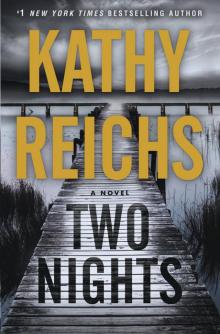 Two Nights
Two Nights The Bone Collection: Four Novellas
The Bone Collection: Four Novellas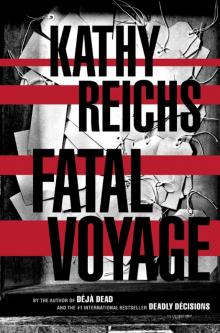 Fatal Voyage
Fatal Voyage 206 Bones
206 Bones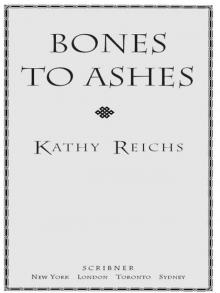 Bones to Ashes
Bones to Ashes Terminal
Terminal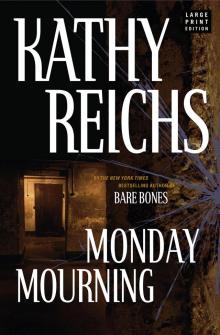 Monday Mourning
Monday Mourning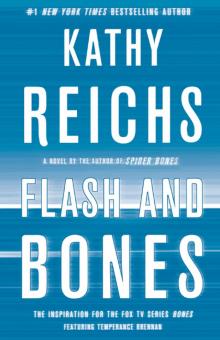 Flash and Bones
Flash and Bones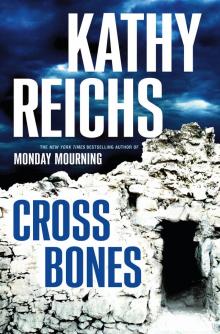 Cross Bones
Cross Bones Devil Bones
Devil Bones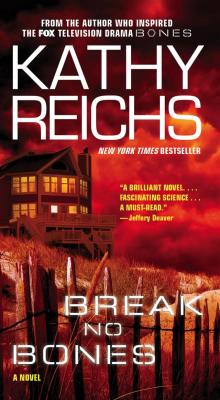 Break No Bones
Break No Bones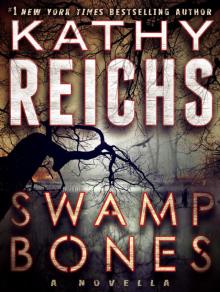 Swamp Bones
Swamp Bones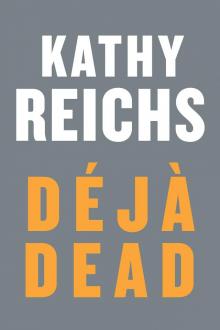 Déjà Dead
Déjà Dead Shock
Shock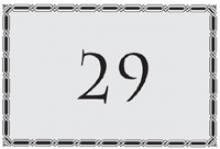 Spider Bones
Spider Bones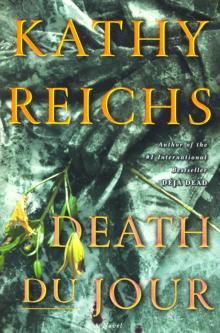 Death Du Jour
Death Du Jour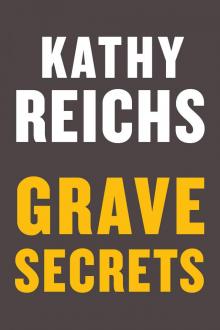 Grave Secrets
Grave Secrets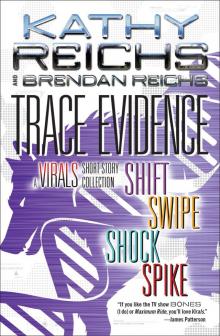 Trace Evidence: A Virals Short Story Collection
Trace Evidence: A Virals Short Story Collection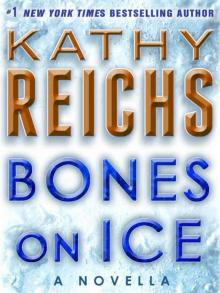 Bones on Ice
Bones on Ice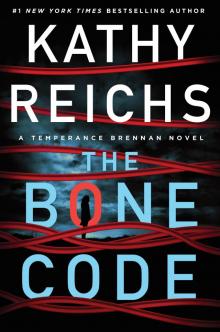 The Bone Code
The Bone Code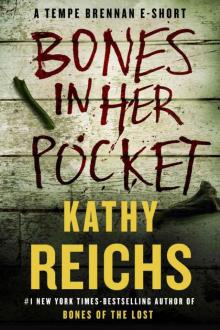 Bones in Her Pocket
Bones in Her Pocket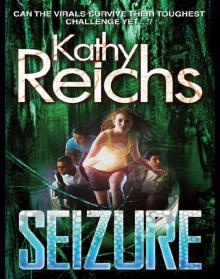 Seizure:
Seizure: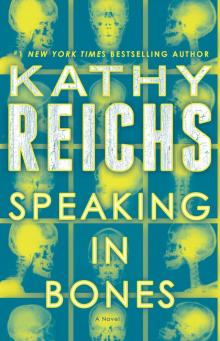 Speaking in Bones
Speaking in Bones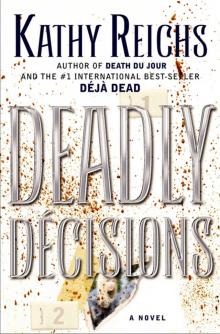 Deadly Decisions
Deadly Decisions Spike
Spike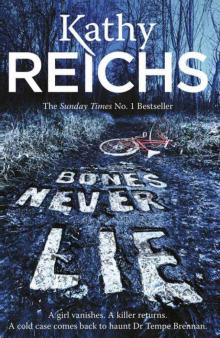 Bones Never Lie
Bones Never Lie Bones of the Lost
Bones of the Lost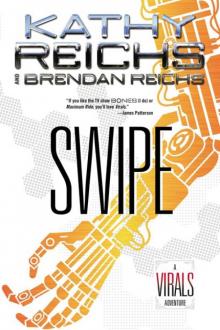 Virals 03.5 - Swipe
Virals 03.5 - Swipe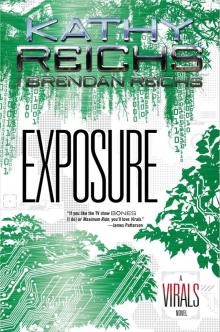 Exposure
Exposure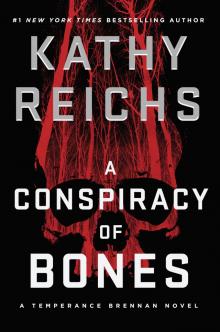 A Conspiracy of Bones
A Conspiracy of Bones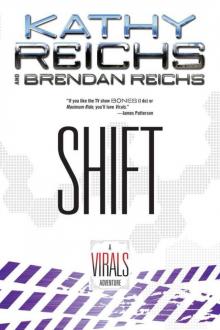 Shift (tory brennan)
Shift (tory brennan)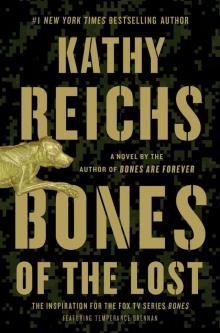 Bones of the Lost: A Temperance Brennan Novel tb-16
Bones of the Lost: A Temperance Brennan Novel tb-16 Virals tb-1
Virals tb-1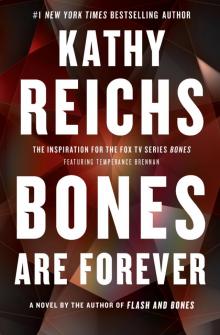 Bones Are Forever tb-15
Bones Are Forever tb-15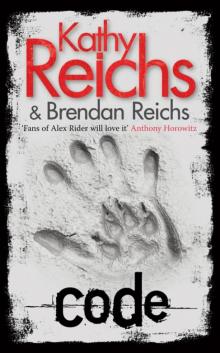 Code tb-3
Code tb-3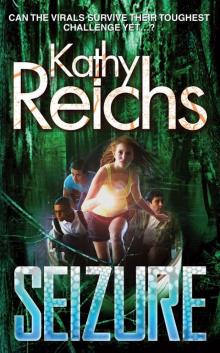 Seizure tb-2
Seizure tb-2 Deadly Descisions
Deadly Descisions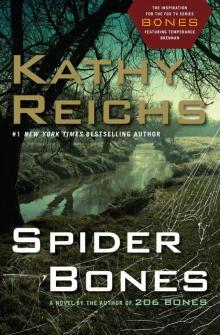 Spider Bones: A Novel
Spider Bones: A Novel